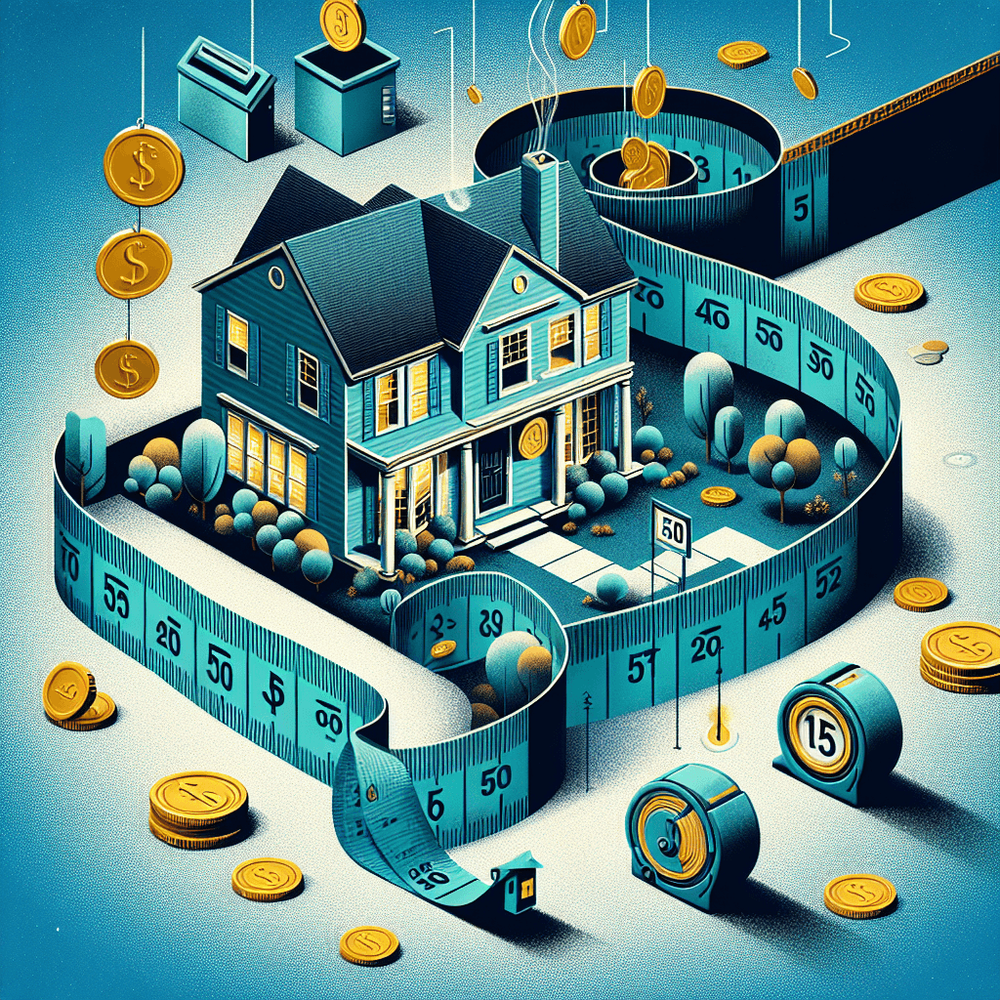Blog
50-Year Mortgages in the U.S.: What They’d Really Do to Payments, Prices, and Risk
6 min read
November 15th, 2025

What’s being proposed — and why now
President Trump signaled interest in creating a new 50-year mortgage, and FHFA Director Bill Pulte amplified the idea as a potential “game changer.” The stated intent is to trim monthly payments and broaden access for younger buyers. Industry reaction has been mixed to skeptical, with allies and critics alike warning that the savings may be modest and the long-run costs high. [abcnews.go.com][reuters.com][politico.com]
Affordability is the backdrop. The typical buyer still needs a six-figure income to afford the median U.S. home, and households are devoting a far larger share of income to housing than in the 2010s. Redfin estimates a buyer needs about $112,000 to afford the median-priced home and that the typical household is around 39% of income on housing to buy today’s median home. [redfin.com]
Freddie Mac’s weekly survey puts the 30-year fixed at roughly the mid‑6% range as of November 13, 2025, easing from 2024 peaks but still well above pre‑2022 norms. [globenewswire.com]
How a 50-year mortgage changes the math
Extending amortization to 50 years lowers the required monthly principal-and-interest payment compared with 30 years — but not by nearly as much as many expect. Using Redfin’s side‑by‑side example assumptions, the monthly payment drop is relatively small, while total interest more than doubles over the life of the loan. [redfin.com]
Two forces drive this:
- Most early payments are interest, so stretching the clock slows principal paydown and equity growth.
- Lenders will likely charge a higher rate for a 50‑year loan, reflecting extra duration and hedging risk in the absence of a deep MBS market at that term. [redfin.com][ubs.com][politico.com]
Quick illustration (same rate, for apples‑to‑apples intuition):
That’s roughly a 10–11% lower payment but vastly higher lifetime interest. If a 50‑year priced even 0.50% above a 30‑year, the monthly gap shrinks further and lifetime interest climbs faster. [whitecoatinvestor.com]
- Loan: $400,000 fixed at 6.0%
- 30‑year: ~$2,398/mo P&I; ~${{approx_int_30}} total interest
- 50‑year: ~$2,146/mo P&I; ~${{approx_int_50}} total interest
The policy and plumbing problem
Even if the math penciled out, today’s rules and market plumbing aren’t set up for 50‑year purchase loans:
- Qualified Mortgage (QM) rules from the CFPB prohibit terms longer than 30 years. Loans over 30 years are not QMs, which removes a key legal safe harbor for lenders. [consumerfinance.gov]
- The GSEs only purchase new fixed‑rate mortgages with terms up to 30 years; their fixed‑rate executions and UMBS pools are built around 10‑, 15‑, 20‑ and 30‑year cash flows. [sf.freddiemac.com]
- Fannie Mae’s whole‑loan commitments list 10/15/20/30‑year terms for delivery; there’s no 50‑year lane. [selling-guide.fanniemae.com]
There is one place you’ll see “longer” terms today: loss mitigation. FHA finalized a 40‑year standalone modification in 2023, and the GSEs’ Flex Modification framework can extend terms out to 480 months (40 years) to help struggling borrowers lower payments after hardship. That’s very different from rolling out a 50‑year product for new purchases. [hud.gov][singlefamily.fanniemae.com][sf.freddiemac.com]
Who would benefit — and who wouldn’t
- Short‑horizon buyers (who expect to sell or refinance within, say, 5–10 years) might see a small monthly break. But equity buildup is slower under a 50‑year, leaving less cushion if prices dip or if you need to sell sooner than planned. [redfin.com]
- If 50‑year loans increase demand without adding supply, some of the monthly savings could be bid into higher prices, diluting the benefit for first‑time buyers. [redfin.com][politico.com]
- The median first‑time buyer is now about 40 years old, and the typical homeowner stays in a home around 12 years. A 50‑year term would likely outlast many borrowers’ homeownership horizons, making the lifetime‑interest math largely academic — but the slow equity build is still very real during the years most people actually keep a mortgage. [nar.realtor][redfin.com]
Practical takeaways for 2025 buyers and investors
- Shop the rate you can get today. Freddie Mac’s PMMS shows ~6.24% for a 30‑year fixed as of Nov. 13. Across lenders, multi‑quote shopping and buydowns can move your effective cost more than a hypothetical 50‑year term would. [globenewswire.com]
- Match the loan to your time horizon. If you expect a move/refi within 7–10 years, a competitively priced ARM might deliver a bigger payment win, with clearer exit optionality than an ultra‑long fixed. [whitecoatinvestor.com]
- Build buffer and equity. Given today’s elevated price-to-income ratios, prioritize a down payment or conservative DTI over stretching the term, especially if you lack emergency savings. [redfin.com]
- Watch the rulemaking. For 50‑year loans to scale, regulators would need to remove the QM 30‑year cap and the GSEs would need new purchase and securitization lanes — and investors would need to buy them at spreads that actually help borrowers. Until then, this remains a proposal, not a product. [consumerfinance.gov][selling-guide.fanniemae.com][sf.freddiemac.com][politico.com]
Bottom line
A 50‑year mortgage could shave a bit off the monthly payment, but at the cost of much higher lifetime interest, slower equity, and added market risk. With current rules capping mainstream loans at 30 years and secondary‑market plumbing built around 10–30 year cash flows, the policy path is non‑trivial. For most buyers, smarter shopping, modest compromises on home choice, or targeted buydowns will matter more than adding two extra decades to the amortization clock. [redfin.com][consumerfinance.gov][globenewswire.com]
Comments